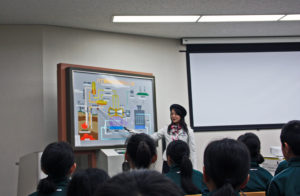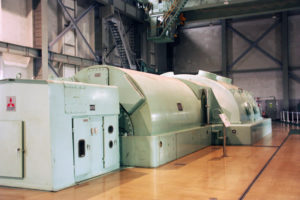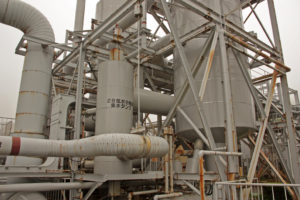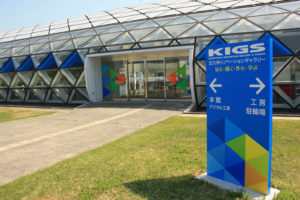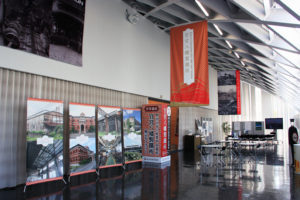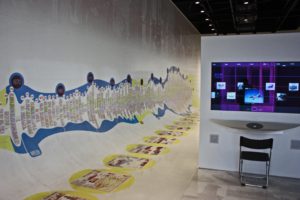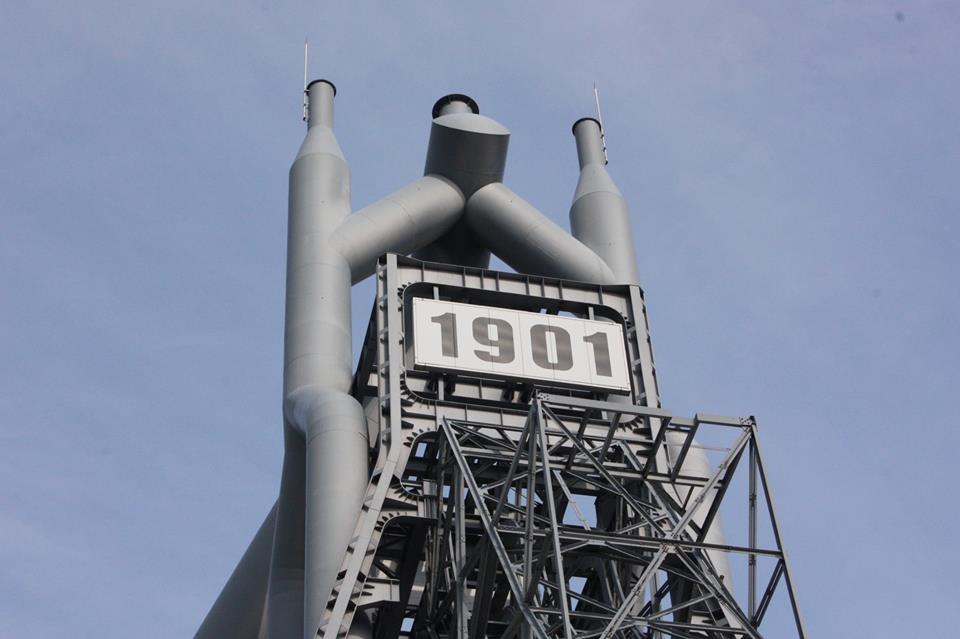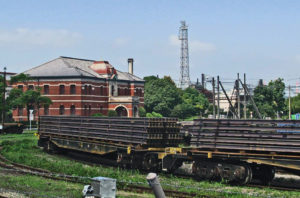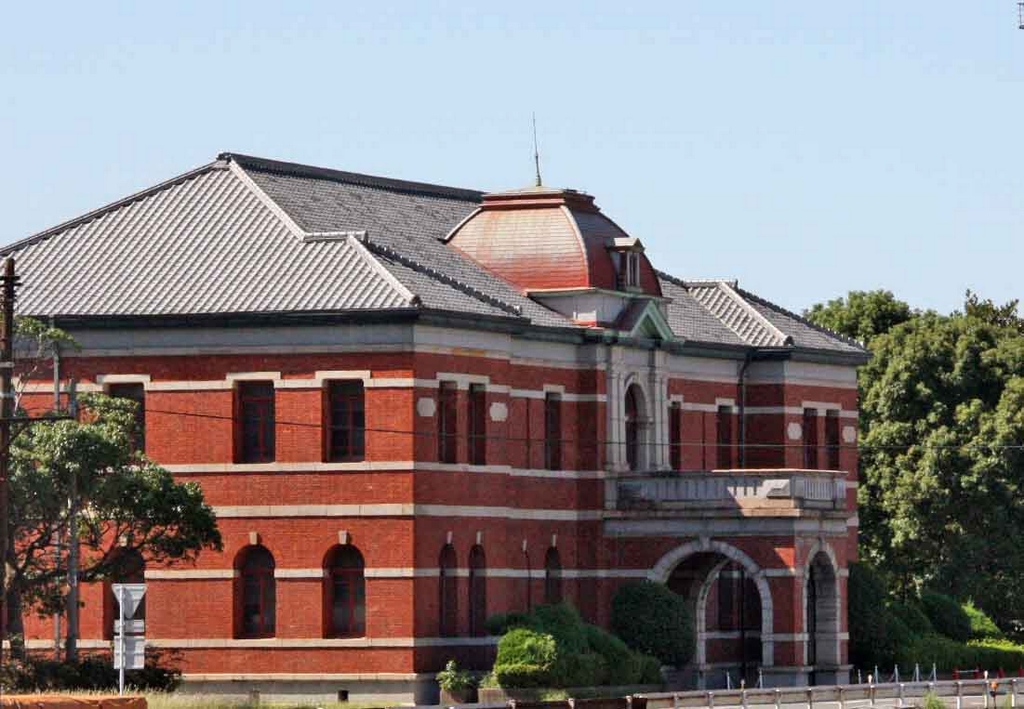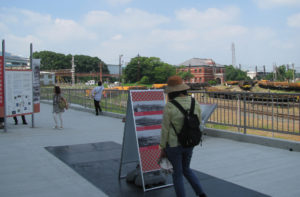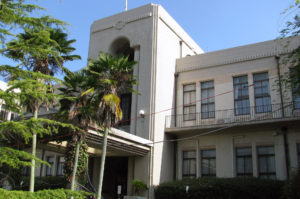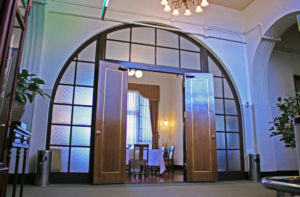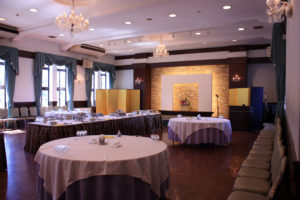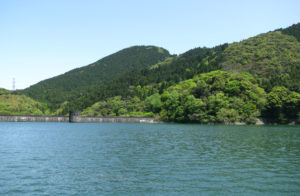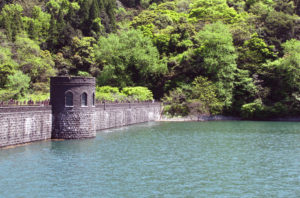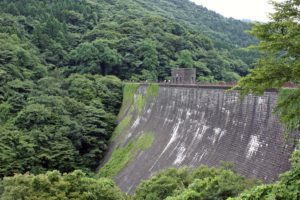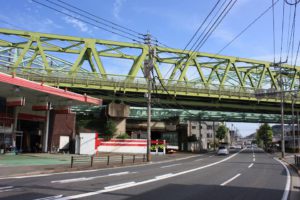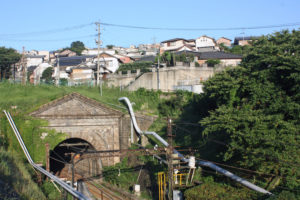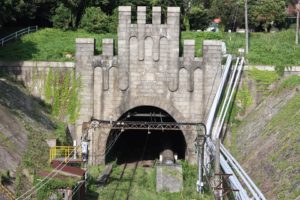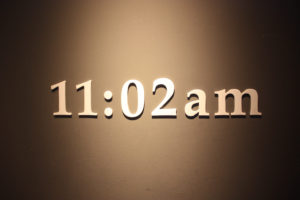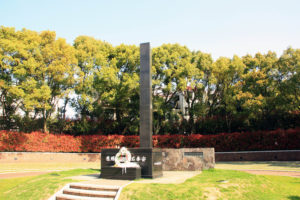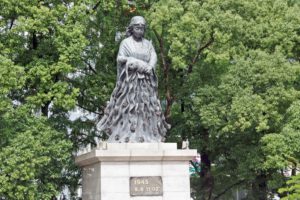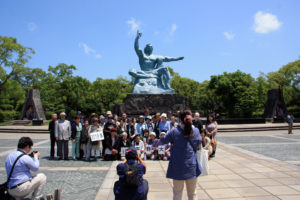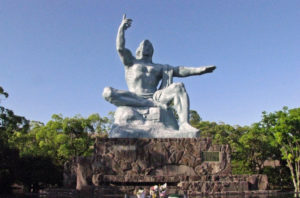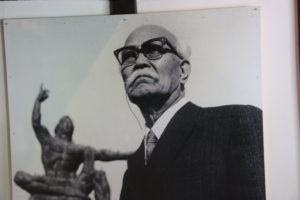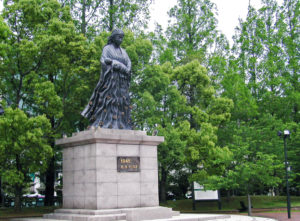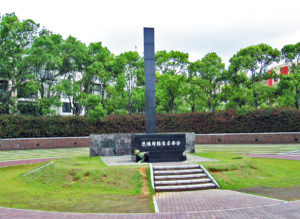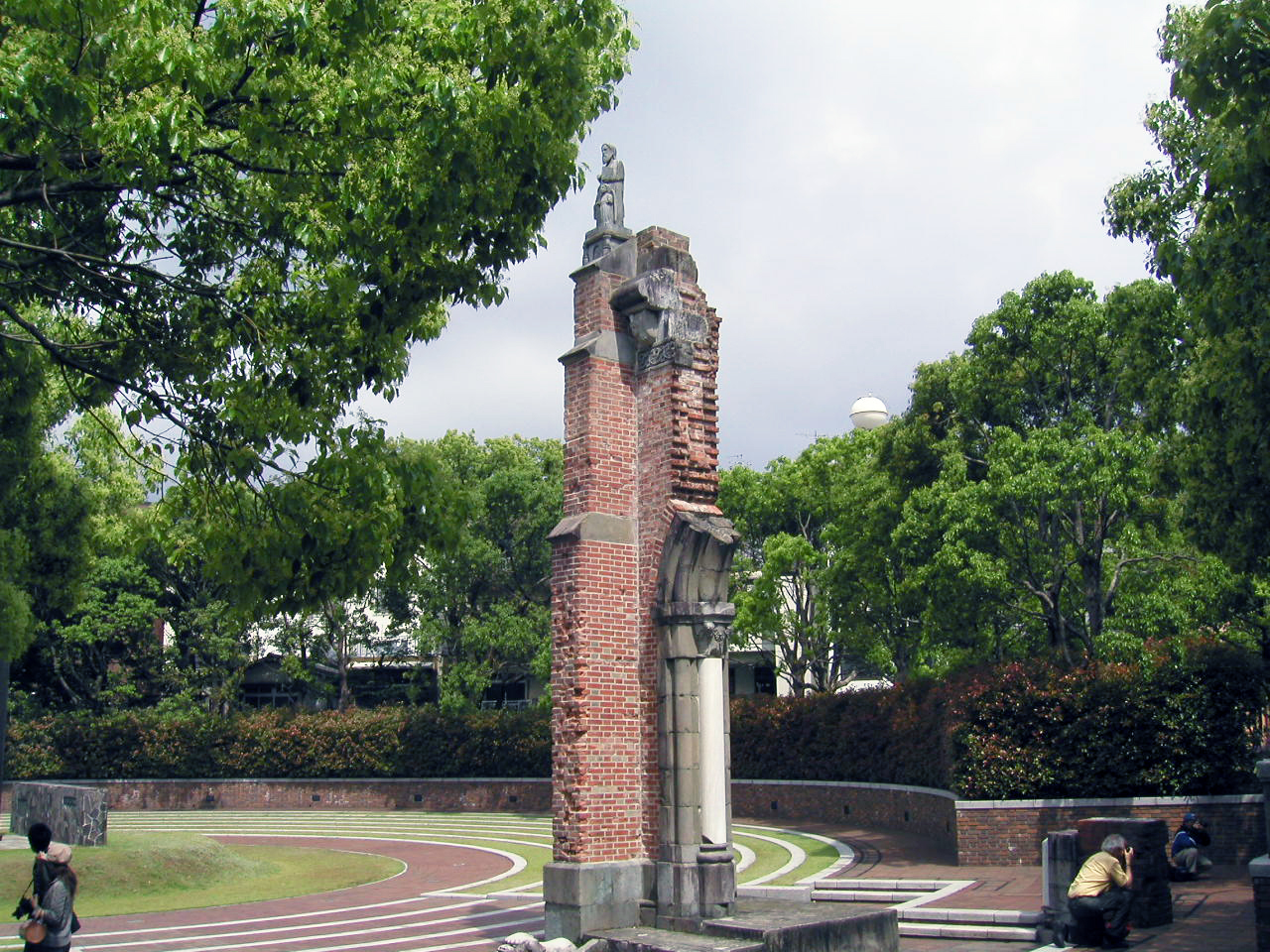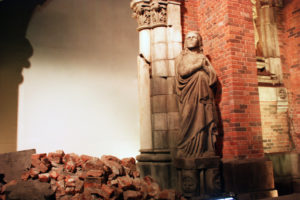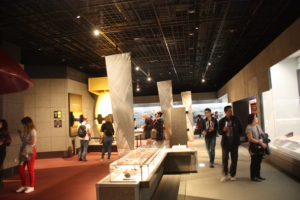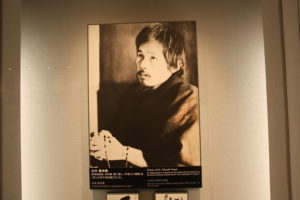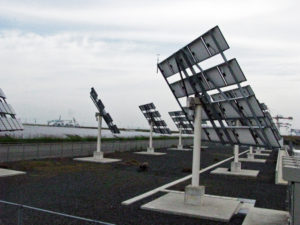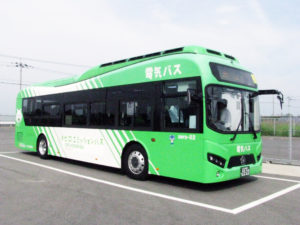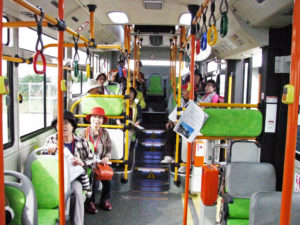Manufacturing company visit in Kitakyushu-city
The city of Kitakyushu is the birthplace of the modern Japanese steel industry which began
operation in 1901, and is now the world’s leading environmental future city after overcoming
serious environmental pollution while it contributed greatly to Japan’s industrial development.
Now it is called industrial and environmental city which is representative of Japan.
Therefore the various manufacturing can be visited for learning State-of-the-art technologies
Nippon Steel and Sumitomo Metal / Yawata Works
Japan’s first modern steel making company established in Kitakyushu in 1901. Now, becoming
the best steel maker with World-leading capabiities. Process of steel making can be learned to
visit Blast Furnace and Hot rolling mill plants.
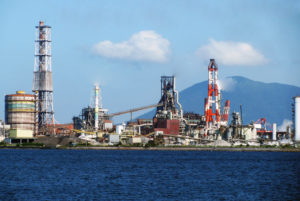 |
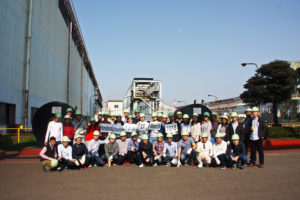 |
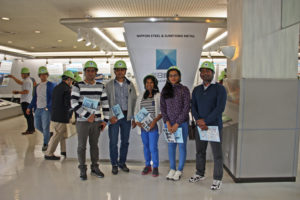 |
World-leading motor and industrial robots manufacturing company established
in Kitakyushu in 1915. The robots are heavy duty industrial robots used in welding, packing,
assembly, painting and other activities.
Robot manufacturing factory and Yaskawa Innovation Centre can be visited.
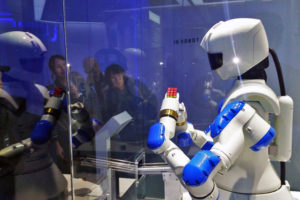 |
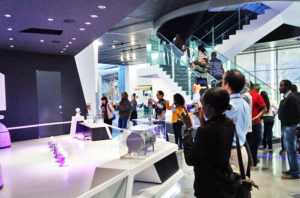 |
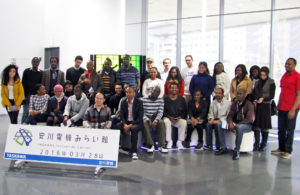 |
The world’s largest toilet manufacturer established in Kitakyushu in 1917.
The company is well-known in Washlet which is an innovative toilet seat that features an
integrated bidet. The sanitary ware manufacturing factory and TOTO Museum can be visited
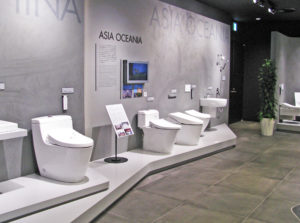 |
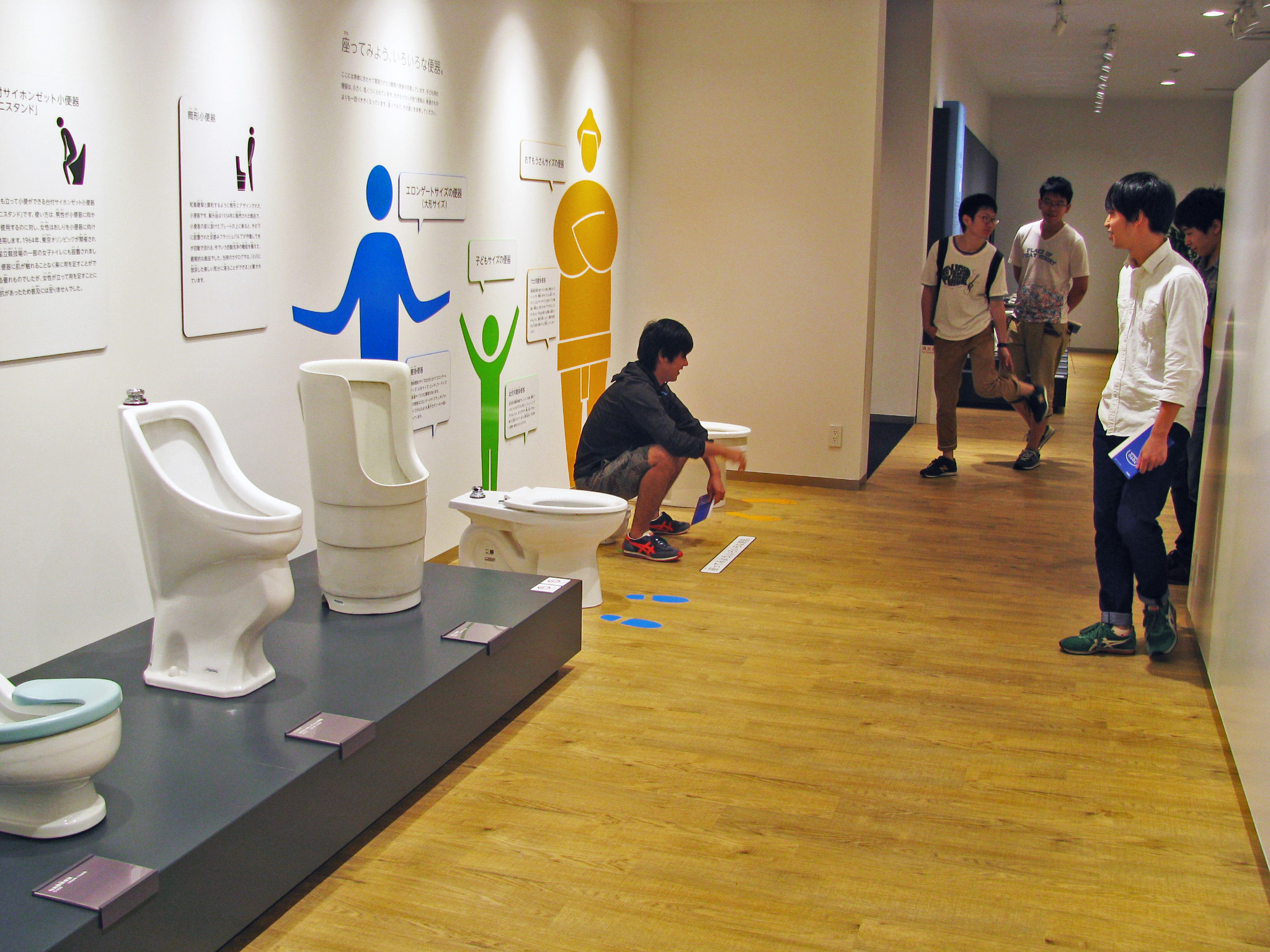 |
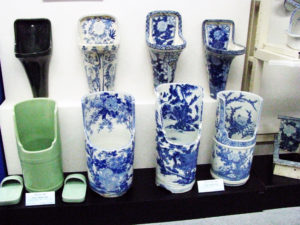 |
The roots of NISSAN is Tobata Casting funded in Kitakyushu in 1911.
The factory was commenced operation in 1975. Now TEANA, X-TRAIL ROGUE, SERENA
and MURANO are being manufactured. The process from assembly of the parts to final
products can be seen.
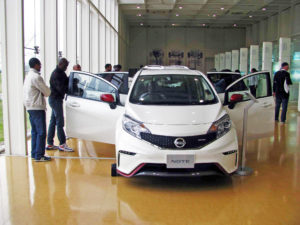 |
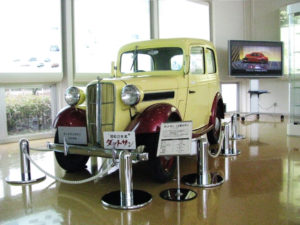 |
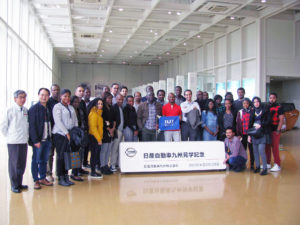 |
Established in 1991, 100% shareholder of Toyota Motor. Major manufactured car is Lexus,
and annual production volume is 430,000 cars. Assembly line and Inspection line are visited
at the factory tour.
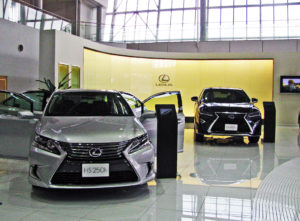 |
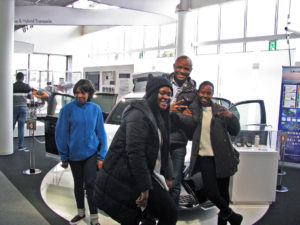 |
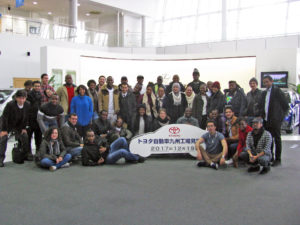 |
Should you need further information please feel free to contact us.
Your equiry can be sent by selecting the Enquiry Form link below.
You can also contact us by e-mail at info@japan-kyushu-tourist.com
Tel : +81-93-521-8897, Fax : +81-93-521-8898
Address : AIM buiding 6th floor, 3-8-1 Asano, Kokura-kitaku, Kitakyushu-city, Fukuoka-prefecture
Company inspection tour in Kyushu
KAIZEN is one of the most important key word
for Japan’s modernization and world leading industries.
KAIZEN is the Japanese word for “improvement”. In business, KAIZEN refers to activities
that continuously improve all functions and involve all employees from the CEO to the
workers on site. It also applies to processes, such as purchasing and logistics, that cross
organizational boundaries into the supply chain.
Manufacturing Company
Nippon Steel and Sumitomo Metal / Yawata Works
Japan’s first modern steel making company established in Kitakyushu in 1901. Now, becoming
the best steel maker with World-leading capabiities. Process of steel making can be learned to
visit Blast Furnace and Hot rolling mill plants.
 |
 |
 |
World-leading motor and industrial robots manufacturing company established
in Kitakyushu in 1915. The robots are heavy duty industrial robots used in welding, packing, assembly, painting and other activities.
Robot manufacturing factory and Yaskawa Innovation Center can be visited.
 |
 |
 |
The world’s largest toilet manufacturer established in Kitakyushu in 1917.
The company is well-known in Washlet which is an innovative toilet seat that features an
integrated bidet. The sanitary ware manufacturing factory and TOTO Museum can be visited
 |
 |
 |
The roots of NISSAN is Tobata Casting funded in Kitakyushu in 1911.
The factory was commenced operation in 1975. Now TEANA, X-TRAIL ROGUE, SERENA
and MURANO are being manufactured. The process from assembly of the parts to final
products can be seen.
 |
 |
 |
Established in 1991, 100% shareholder of Toyota Motor. Major manufactured car is Lexus,
and annual production volume is 430,000 cars. Assembly line and Inspection line are visited
at the factory tour.
 |
 |
 |
Power Generation
Kyushu Electric Power / LNG thermal plant in Kitakyushu-city
Kyushu’s first thermal power plant used LNG and power generation capacity is 1,800,000kw.
Generation of electricity process can be learned by visiting the turbine room, control room and
boiler plant
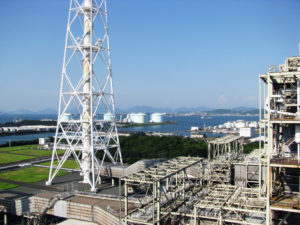 |
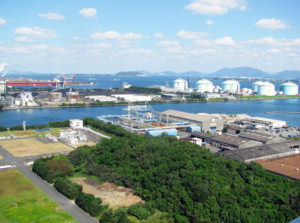 |
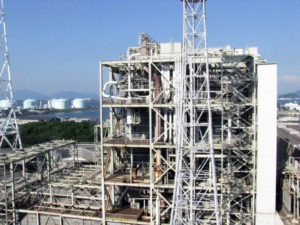 |
Kyushu Electric Power / Geothermal power plant in Oita-prefecture
Japan’s largest thermal power plant utilized Geothermal.
Geothermal power generation is a method of generating electricity by turning the turbine
directly with steam taken from the deep underground.
|
Introduce generation system |
Turbine room |
Boilor plant |
The company have been supplying low-cost and reliable electricity for over 60 years.
And research and development of the environmental measurement have been conducted.
New solar power generation and wind power generation systems can be learned.
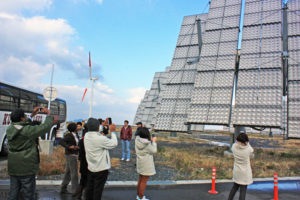 |
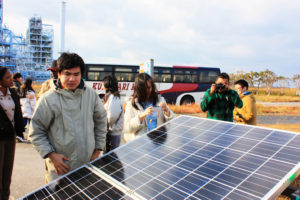 |
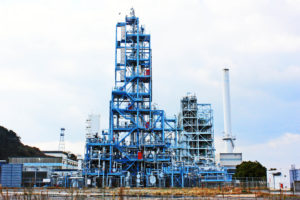 |
Japan’s first wind power generation plant constructed at the coast line facing windy strong
Hibikinada sea. 10 wind power generators line up and total generation capacity is 15,000kw.
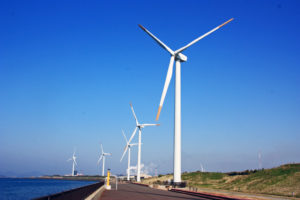 |
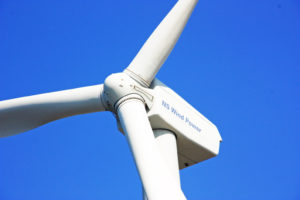 |
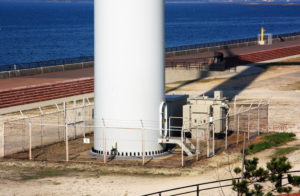 |
Should you need further information please feel free to contact us.
Your equiry can be sent by selecting the Enquiry Form link below.
You can also contact us by e-mail at info@japan-kyushu-tourist.com
Tel : +81-93-521-8897, Fax : +81-93-521-8898
Address : AIM buiding 6th floor, 3-8-1 Asano, Kokura-kitaku, Kitakyushu-city, Fukuoka-prefecture
Industrial Heritage tour in Kitakyushu
The tour offers how Japan became the world’s leading
Industrial country.
In 1901, Japanese modern steel industry started in Kitakyushu. Since then Kitakyushu became
the industry city and Japan’s Industrial modernization has been achieved here with
unprecedented surprising speed.
Tour condition
・Start and end of the tour is to be Kitakyushu
・Guided by Industrial Heritage guide
・Chartered vehicle such as a jumbo taxi or bus
World Herigtage → Lunch at Otani Kaikan Hall → Kawachi Resevoir
Japan’s Modern Steel Works history started here
Yawata was a rural village with a small population of agriculture and fishing industry.
And this place was decided in Parliament as the Japan’s Modern Steel Works
construction site in 1897.
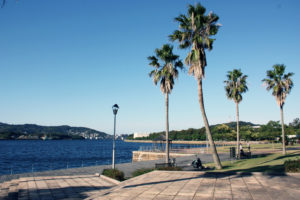 |
 |
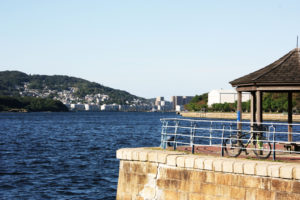 |
In April 2007, based on this theme of “innovation,” the Kitakyushu Innovation Gallery & Studio (KIGS)
opened in Yahata, Higashida, the first site of steel manufacturing in Japan’s modern age.
|
Museum Building |
World Heritage, Meiji Japan’s Industry Revolution |
Introducing Industry innovation history of Japan |
This office is a Witness who has been watching the history of industrial
modernization in Japan while also experiencing war.
received the Kitakyushu City Architectural Culture Award in 1989.
Connected between Yawata and Tobata. Construction work took three years, and completed in 1930.
The most difficult and hard work was making Miyatayama tunnel with a total length of 1180 m due to
suffering from floods.
The gates of the Miyatayama tunnel are decorated with stately designs.
|
The rail way crossing the road |
Miyatayama tunnel Yahata side |
Miyatayama tunnel Tobata |
Should you need further information please feel free to contact us.
Your equiry can be sent by selecting the Enquiry Form link below.
You can also contact us by e-mail at info@japan-kyushu-tourist.com
Tel : +81-93-521-8897, Fax : +81-93-521-8898
Address : AIM buiding 6th floor, 3-8-1 Asano, Kokura-kitaku, Kitakyushu-city, Fukuoka-prefecture
Wakamatsu-kita Coast
The northern tip Coast of Kyushu Island and facing to Genkai Sea where
a part of Genkai Quasi-National Park.
Breathtaking and dynamic view and beautiful sunset scenery can be enjoyed.
|
Tomigahana Lighthouse |
Genkai Sea |
Genkai Sea |
 |
 |
 |
|
Ancient Stratum |
Eroded rock |
Eroded rock |
 |
 |
 |
|
Enjoy panoramic view |
Misaki Shrine |
Tomigahana Lighthouse |
 |
 |
 |
|
Iwaya Beach |
Iwaya Beach |
Iwaya Beach |
 |
 |
 |
|
Iwaya Port |
Wakamatsu Cabbege field |
Wakamatsu Cabbege |
 |
 |
 |
|
Lovers’ Sanctuary |
Natsuigahama Coast |
Natsuigahama Coast |
 |
 |
 |
Should you need further information please feel free to contact us.
Your equiry can be sent by selecting the Enquiry Form link below.
You can also contact us by e-mail at info@japan-kyushu-tourist.com
Tel : +81-93-521-8897 , Fax : +81-93-521-8898
Address : AIM buiding 6th floor, 3-8-1 Asano, Kokura-kitaku, Kitakyushu-city, Fukuoka-prefecture
World Peace learning
Disastrous War must not be repeated
The plutonium atomic bomb exploded about 500m over the central monument
at 11:02 a.m. on August 9, 1945.
The most part of Nagasaki was destroyed, and a tremendous number of lives were lost.
And about 70,000 of Nagasaki’s 240,000 residents died instantly, and up to 60,000 were injured.
|
The time, Atomic bomb was exploded |
Atomic bomb exploded over the central monument |
Nuked 50th Anniversary Monument |
Established in 1955 near the Ground Zero where the Atomic Bomb was dropped
at 11:02 am on Aug. 09, 1945.
Completed in 1955, ten years after the atomic bombing
The 9.7 meter high statue sitting on a 4 meter tall pedestal, made by renown sculptor
Kitamura Seibo who born in Minami-Shimabara-city, Nagasaki-prefecture in 1884.
The raised arm points to the threat of nuclear weapons and the out-stretched arm
symbolizes peace.
|
Visiting from all over Japan and the World |
Wishing for eternal world peace from Nagasaki |
Kitamura Seibo, the Statue was completed at the age of 71 |
The plutonium atomic bomb exploded about 500m over the central monument at 11:02 a.m.
on August 9, 1945. The most part of Nagasaki was destroyed, and a tremendous number of
lives were lost. And about 70,000 of Nagasaki’s 240,000 residents died instantly, and up to 60,000
were injured.
|
Nuked 50th Anniversary Monument |
Atomic bomb exploded over the central monument |
Ruins of destroyed Urakami Cathedral |
The museum exhibits a number of photograph that depict the devastation caused by atomic
bomb showing the lead-up to this tragic day, the history of the development of nuclear arms
and our desire for peace.
|
Destroyed Urakami Cathedral is displayed |
Exhibits a number of photograph |
Dr. Nagai Takashi |
The Peace Fountain reminds us of the tragic scene unfolded shortly after America dropped the
Atomic Bomb on Nagasaki at 11:02 am on Aug. 09, 1945
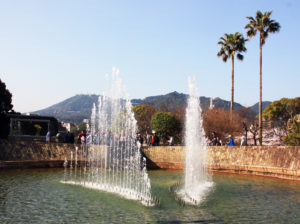 |
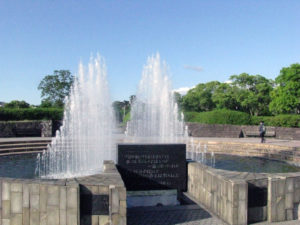 |
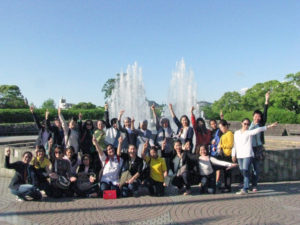 |
Should you need further information please feel free to contact us.
Your equiry can be sent by selecting the Enquiry Form link below.
You can also contact us by e-mail at info@japan-kyushu-tourist.com
Tel : +81-93-521-8897, Fax : +81-93-521-8898
Address : AIM buiding 6th floor, 3-8-1 Asano, Kokura-kitaku, Kitakyushu-city, Fukuoka-prefecture
Water Plaza
The Plant making fresh water from sea water and sewage water established in 2011.
The desalination process and technology can be leared.
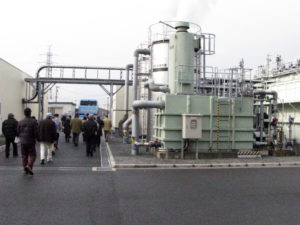 |
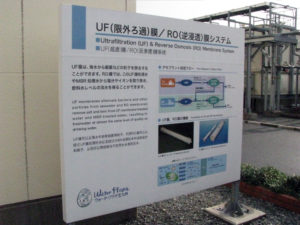 |
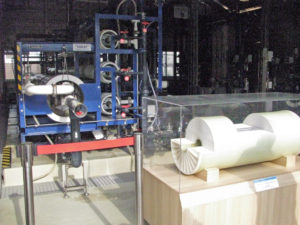 |
General information
| Address | 96-1 Nishiminato-machi, Kokura-kitaku, Kitakyushu-city, Fukuoka-prefecture |
| Access | 20 minutes by a vehicle from JR Kokura Station |
| Days of visit | Weekdays except Saturdays, Sundays and National Holidays |
| Fee | No visiting fee is required |
| Arrangment | Japan KYUSHU Tourist organize to visit |
Should you need further information please feel free to contact us.
Your equiry can be sent by selecting the Enquiry Form link below.
You can also contact us by e-mail at info@japan-kyushu-tourist.com
Tel : +81-93-521-8897, Fax : +81-93-521-8898
Address : AIM buiding 6th floor, 3-8-1 Asano, Kokura-kitaku, Kitakyushu-city, Fukuoka-prefecture
Kyushu Electric Power / Geothermal power plant
Power generation
Kyushu Electric Power / Hachobaru Geothermal plant
Japan’s largest thermal power plant utilized Geothermal.
Geothermal power generation is a method of generating electricity by turning the turbine
directly with steam taken from the deep underground.
The plant is located in Kokonoe where southwestern part of Oita Prefecture, east and south are
surrounded by the Kuju Mountains. There are many Onsen or hot springs in the town, especially
Sujiyu Onsen boast the largest scale.
What to learn
Environmentally friendly thermal power generation system utilized Geothermal.
Where to visit
Exhibition hall, Control room, Turbine room and Boiler plant
|
Introduce generation system |
Turbine room |
Boilor plant |
Generation capacity : 110,000 Kw
General information
| Address | 601 Hachobaru Yunotubo, Kokonoe-machi, Kusu-gun, Oita-prefecture |
| Access | One and half hours from Fukuoka-city, two and half hoours from Kitakyushu-city by vehicle |
| Days of visit | Weekdays except Saturdays, Sundays and National Holidays |
| Fee | No visiting fee is required |
| Booking | Can be made by Japan KYUSHU Tourist |
Should you need further information please feel free to contact us.
Your equiry can be sent by selecting the Enquiry Form link below.
You can also contact us by e-mail at info@japan-kyushu-tourist.com
Tel : +81-93-521-8897, Fax : +81-93-521-8898
Address : AIM buiding 6th floor, 3-8-1 Asano, Kokura-kitaku, Kitakyushu-city, Fukuoka-prefecture
Environmental and Waste management tour
Kitakyushu is offering various Environmental and Waste manatement
technologies.
Kitakyushu-city, once known as a “town of pollution,” now plays the role of the driving
force in creating a recycling-oriented society in Japan making use of the experience
and know-how it accumulated in the process of overcoming its pollution in order to
provide international cooperation.
Our study tour provides the solutions of the Environmental issues
Model of the tour
Lecture of Environmental improvement business
Lecturer : Masa Kondo, managing director of Japan KYUSHU Tourist
(have expertise and experience in the technical field)
Content of lecture
History to Environmental Future city
World leading environmental business
Venue : Kitakyushu Innovation Gallery
Where to visit
Please select from the following
Eco Project information center that supports the Eco-town. It introduces initiatives and activities
implemented in Eco-town to encourage people to proactively used the facility for such activities
as environmental study sessions and interaction amongst visitors.
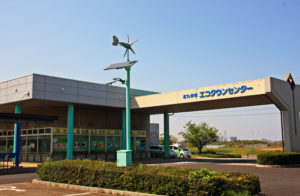 |
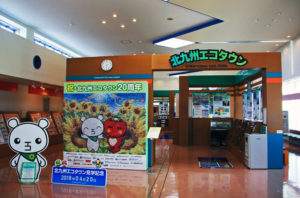 |
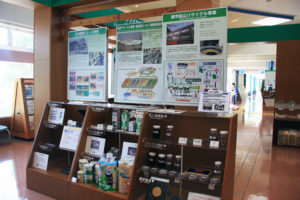 |
Zero Emission Transportation System
The Electric bus driven by the electricity generated by a solar power generation, therefor no global
warming gases emitted from the bus. Operation of the system is commenced in 2015.
The solar power generation plant, the power charging equipment and Electric bus can be observed.
|
Solar Power Generation for the Electric bus |
Electric bus |
On the Electric bus |
Waste treatment and Recycling
Plastic PET Bottle recycling / Nishi-Nippon PET Recycling
PET (polyethylene terephthalate) bottles are sorted by municipalities and recycled into
pellets and flakes, which can be used as raw materials for polyester fibers and egg cartons
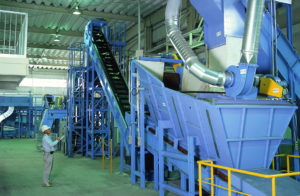 |
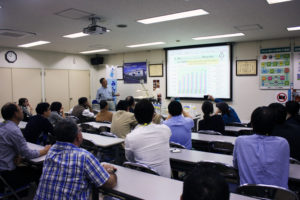 |
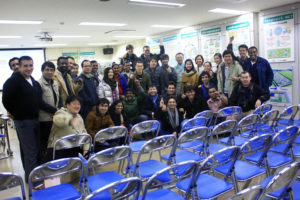 |
Melting Furnace / Sin-Moji Plant
The collected waste including metals is melted at over 1,700 degree Celsius in the Melting
Furnace and then the melted slag and metals are discharged.
The slag is used as raw materials for pavement and bricks and the metals are re-used for
other steel products. The process and technology of the Melting Furnace can be learned.
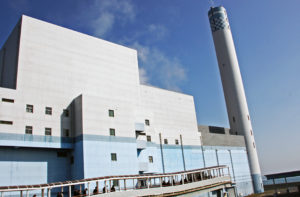 |
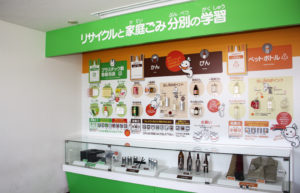 |
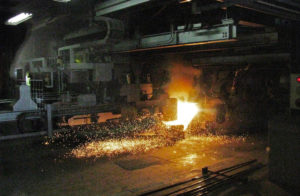 |
Waste paper recycling / Kyushu Seishi
Refined waste papers is recycled into toilet papers.
Sludge generated during the toilet paper production process is used to produce a
foaming inhibitor used by steel works.
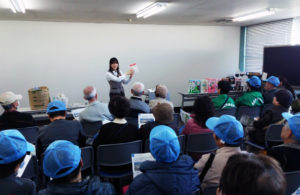 |
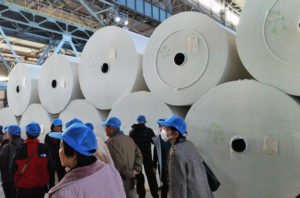 |
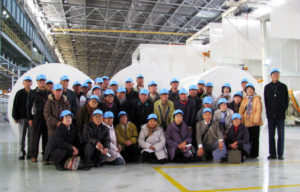 |
Power generation plants
Kyushu Electric Power / Shin-Kokura Plant
Kyushu’s first thermal power plant used LNG and power generation capacity is 1,800,000kw.
Generation of electricity process can be learned by visiting the turbine room, control room and
boiler plant
 |
 |
 |
The company have been supplying low-cost and reliable electricity for over 60 years.
And research and development of the environmental measurement have been conducted.
New solar power generation and wind power generation systems can be learned.
 |
 |
 |
Japan’s first wind power generation plant constructed at the coast line facing windy strong
Hibikinada sea. 10 wind power generators line up and total generation capacity is 15,000kw.
 |
 |
 |
Water treatment plants and facilities
Hiagari Sewage water treatment plant
The sewage come through the sewer pipe is purified in the plant and flow into the sea.
There is an also new technology plant which the electricity is generated using the sludge from sewage.
At the Visitor Center established in 2015, sewage treatment process and technologies can be learned.
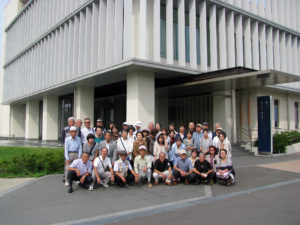 |
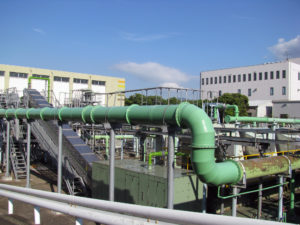 |
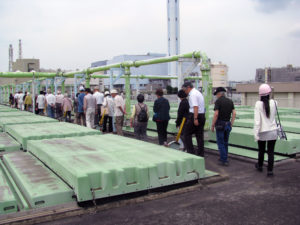 |
The Plant making fresh water from sea water and sewage water established in 2011.
The desalination process and technology can be leared.
 |
 |
 |
Should you need further information please feel free to contact us.
Your equiry can be sent by selecting the Enquiry Form link below.
You can also contact us by e-mail at info@japan-kyushu-tourist.com
Tel : +81-93-521-8897, Fax : +81-93-521-8898
Address : AIM buiding 6th floor, 3-8-1 Asano, Kokura-kitaku, Kitakyushu-city, Fukuoka-prefecture
Kitakyushu Iron tree
Lighted up Iron tree
The 205 metre high Stack at the Nippon Steel & Sumitomo Metal / Yawata Works
is lighted up during week end, every Friday, Saturday and Sunday.
 |
 |
 |
The stack is called as Iron tree, the colour is changed from pink to blue, yellow, green
and white gradually.
 |
 |
 |
The best view place to watch is Asano Shikaze park, located in fromt of West Japan General
Exhibition Center
General information
| Address | 1 Konomi-machi, Kokurakita-ku, Kitakyushu-city, Fukuoka-prefecture |
| Access | 5 minutes walk from JR Kokura Station to Asano Shiokaze park |
Should you need further information please feel free to contact us.
Your equiry can be sent by selecting the Enquiry Form link below.
You can also contact us by e-mail at info@japan-kyushu-tourist.com
Tel : +81-93-521-8897 , Fax : +81-93-521-8898
Address : AIM buiding 6th floor, 3-8-1 Asano, Kokura-kitaku, Kitakyushu-city, Fukuoka-prefecture
Baked Eel
the eel to heighten its flavor.
is broiled over a charcoal fire while being dipped several times in a
special sauce.
rice wine.

